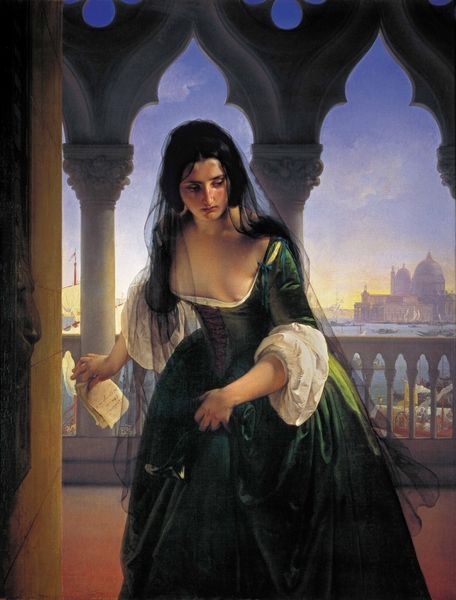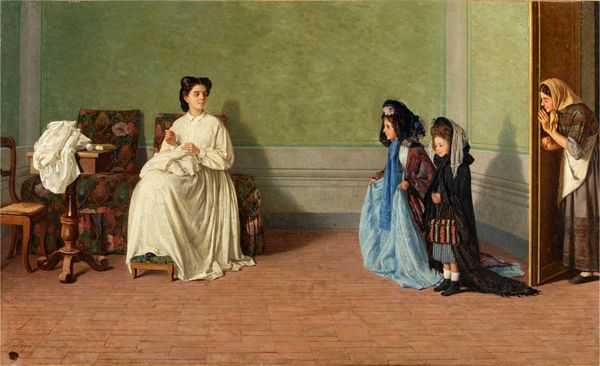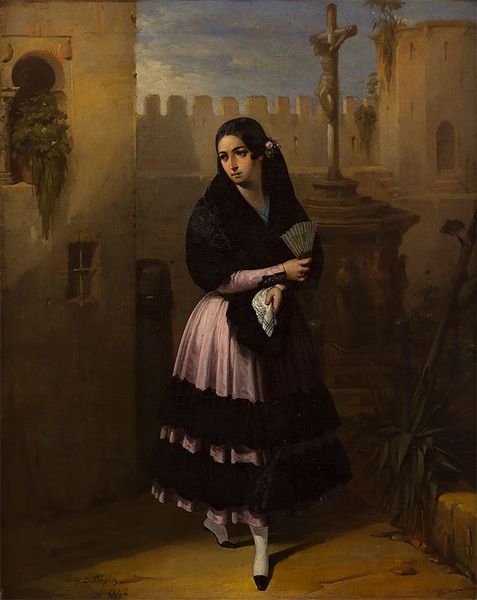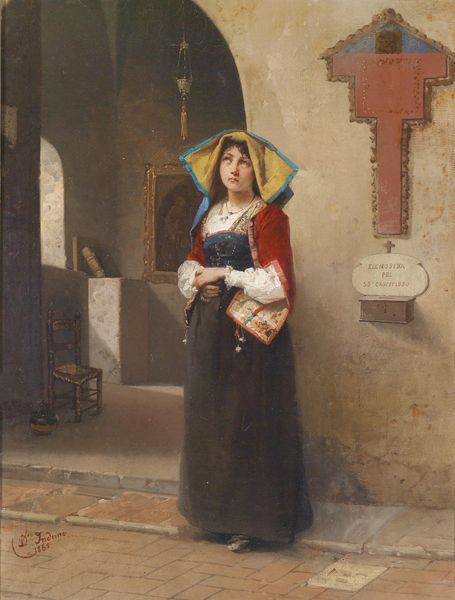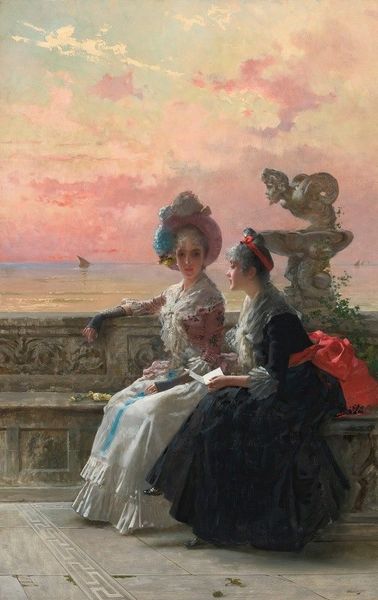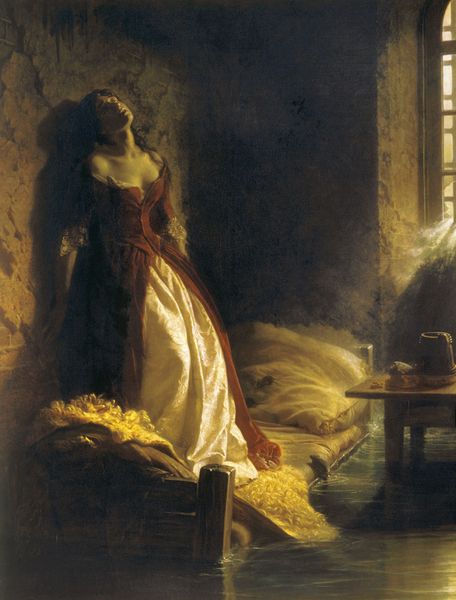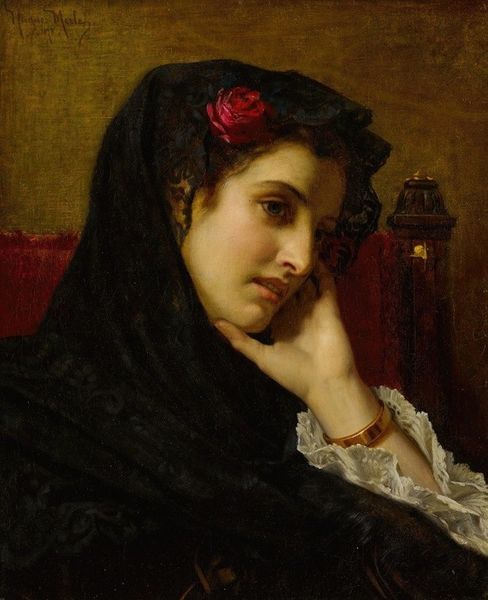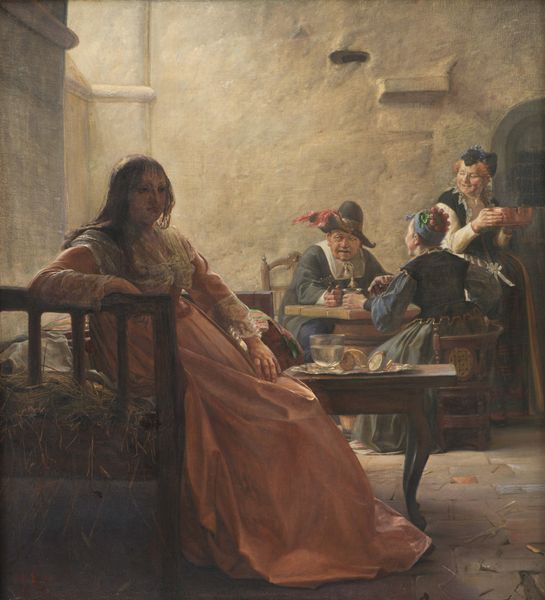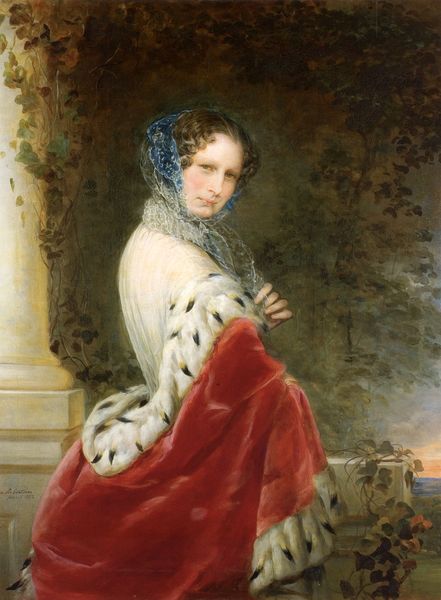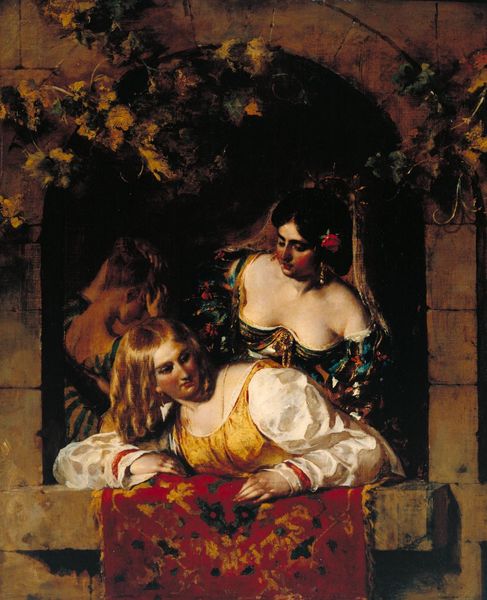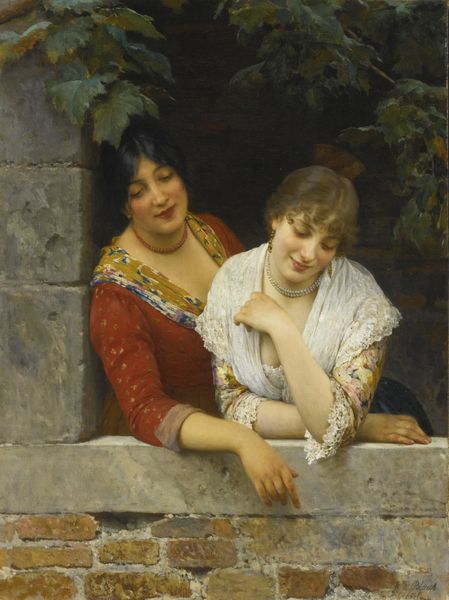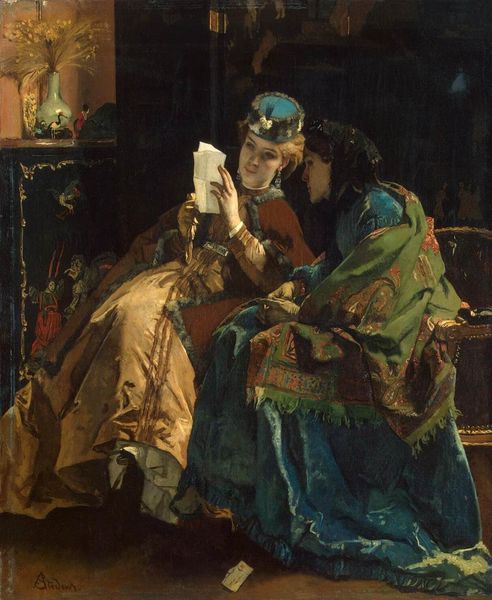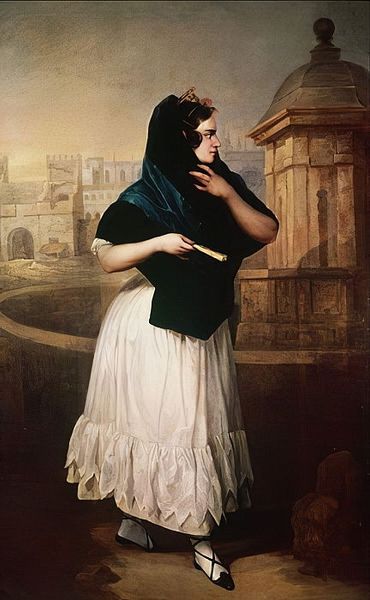
Dimensions: 237 x 178 cm
Copyright: Public domain
Curator: Straight away, there's an unnerving calmness. I think it might be the almost too-smooth surface and that distant light reflecting off the water in Francesco Hayez's *Vengeance is Sworn*. Editor: Indeed. And considering it’s an oil painting from 1851, there is a curious absence of visible brushstrokes here. The labor is hidden, quite intentionally, I suspect, to ennoble the narrative, but what about the social dynamics at play here? Curator: Absolutely, you have a narrative that simmers with whispered secrets. Note the contrast in fabrics – the heavy, almost oppressive dark silk of the central figure against the lighter floral of her companion. And her downcast eyes suggest this meeting and vow may have darker implications. Editor: Interesting, especially because that floral fabric must have been mass produced and quite widely available, while the other speaks of a different economic class altogether. Is the romantic interpretation just a smoke screen? Curator: Well, think about what a vow means in a society constrained by social mores, particularly for women. Perhaps Hayez is trying to portray that tension, using these fabrics almost as visual shorthand to suggest class tension as well as intimacy and threat. It speaks to how we negotiate our personal convictions against societal forces. Editor: Agreed. Also note the location of the two women. This genre painting seems carefully positioned within the architecture and available raw materials for the backdrop of old-world wealth, while drawing attention away from how that infrastructure of old money can be weaponized. Curator: Yes, there’s the veiled anonymity implied with the masks too! I imagine those beautiful structures becoming prisons if justice remains elusive. It’s a dance between societal expectation, personal honor and emotional depth. The title certainly gives us a big hint that they don’t mean good. Editor: Well said. From my viewpoint, looking through the production processes inherent in the work offers an avenue to engage further on these difficult conversations on class, history and justice, than from the surface appearance of the composition alone. Curator: Looking again at it through your eyes now makes me feel much more uneasy – those silks look more like a winding sheet... Editor: They are…ominous, right? An almost chilling reminder to investigate beyond face value of how society shapes individuals toward vengeful ends, and to question its legacy.
Comments
No comments
Be the first to comment and join the conversation on the ultimate creative platform.
